Arizona’s desert landscape transforms into a vibrant tapestry each spring, when cacti, wildflowers, and desert trees burst into spectacular displays of color. The Sonoran Desert becomes a natural art gallery, with trails winding through corridors of blooming palo verde trees, fields of lupines, and towering saguaros crowned with white flowers.
These desert bloom trails offer more than just pretty scenery—they provide a front-row seat to one of nature’s most remarkable annual events. Here is a list of 20 exceptional trails where you can witness Arizona’s desert come alive with color.
Desert Botanical Garden Trail
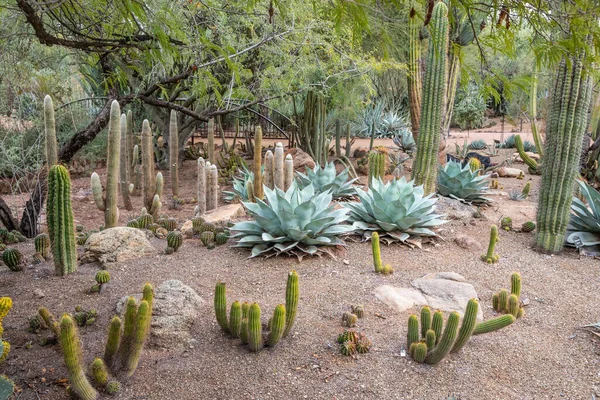
This 1.4-mile loop in Phoenix showcases over 50,000 desert plants from around the world, many of which bloom spectacularly from March through May. The paved pathways make it accessible for all fitness levels, while interpretive signs help you identify the amazing variety of flowering cacti and desert trees.
The garden’s location in Papago Park means you can easily combine your visit with hiking the nearby red rock formations.
South Mountain Preserve Mormon Trail
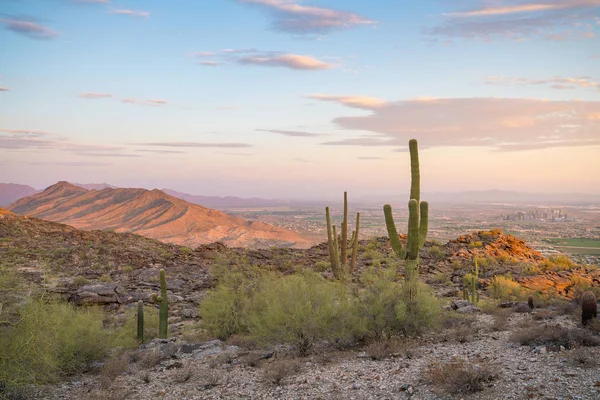
The 3.5-mile round trip to the Hidden Valley offers incredible displays of brittlebush, fairy duster, and chuparosa blooms against the backdrop of ancient petroglyphs. Spring transforms this desert corridor into a golden carpet of flowers, especially after a wet winter.
The moderate terrain makes it perfect for families wanting to experience desert blooms without extreme difficulty.
Like Travel Pug’s content? Follow us on MSN.
McDowell Mountain Regional Park Scenic Trail

This 4.8-mile loop winds through the pristine Sonoran Desert, where ghost flower, desert lupine, and palo verde trees create stunning color combinations each spring. The trail’s gentle elevation changes provide constantly shifting perspectives of the McDowell Mountains while leading you through different microclimates.
Early morning hikes often reward visitors with the sight of hummingbirds feeding on blooming ocotillo and chuparosa.
Superstition Wilderness Peralta Trail
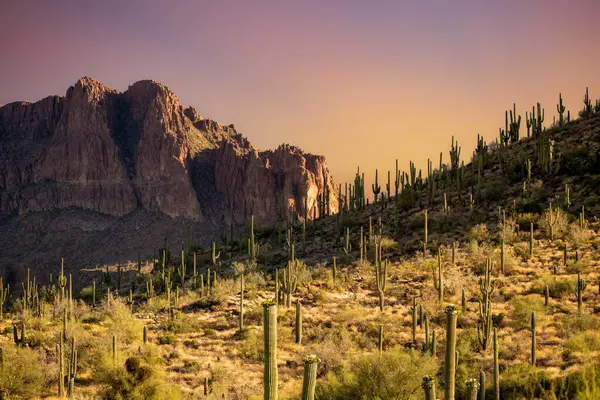
The 5.4-mile round trip to Fremont Saddle passes through some of the most diverse desert bloom displays in Arizona, with over 40 species of wildflowers documented along this route. Ancient saguaros line the path like sentinels, their white crown flowers attracting bats and birds during peak bloom.
The dramatic finale at the saddle offers panoramic views of Weaver’s Needle framed by blooming desert vegetation.
Organ Pipe Cactus National Monument Desert View Trail
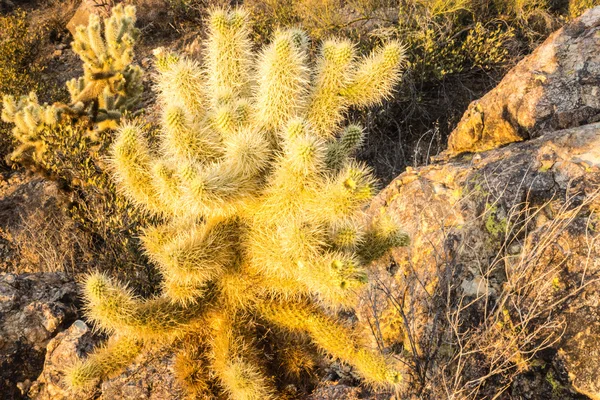
This 1.2-mile interpretive trail provides close encounters with the rare organ pipe cactus, which blooms with white flowers from April to June. The desert here hosts over 30 species of cacti, many found nowhere else in the United States.
The trail offers excellent opportunities to observe blooming senita cacti, desert lavender, and the park’s famous organ pipe specimens up close.
Like Travel Pug’s content? Follow us on MSN.
Saguaro National Park Valley View Trail
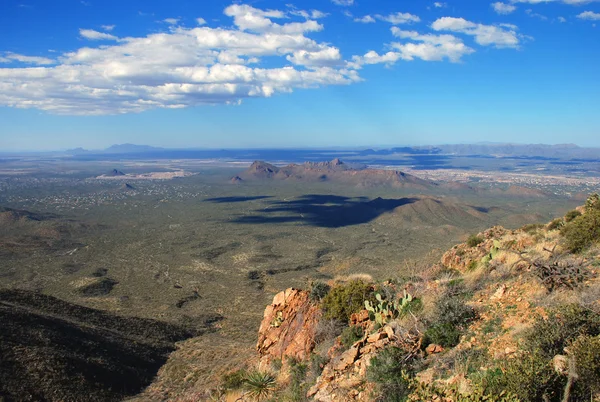
This moderate 1.6-mile trail provides intimate encounters with blooming saguaros, whose white flowers appear from late April through June and attract various desert wildlife. The path meanders through dense saguaro forests where barrel cacti, prickly pears, and cholla also contribute their colorful blooms to the spring display.
Sunset hikes during bloom season offer the magical combination of golden light and flowering giants.
Picacho Peak State Park Barrett Loop Trail
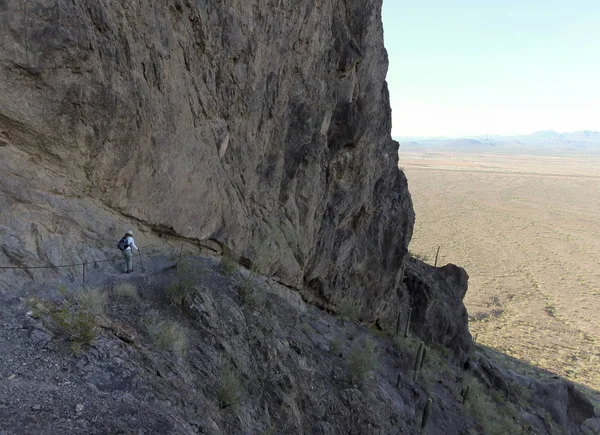
The 1.5-mile Barrett Loop delivers some of Arizona’s most reliable wildflower displays, with desert lupine, owl clover, and Mexican goldpoppies creating carpets of purple, orange, and yellow. This state park has become legendary among wildflower enthusiasts, particularly during exceptional bloom years when the desert floor disappears under waves of color.
The relatively flat terrain allows visitors to focus entirely on the floral spectacle rather than challenging climbs.
Lost Dutchman State Park Treasure Loop Trail
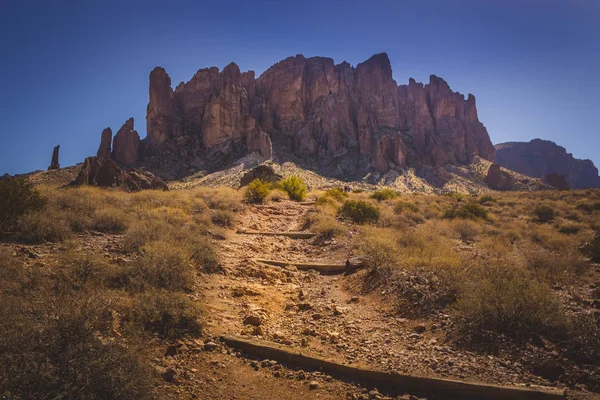
This easy 2.4-mile loop through the Superstition Mountains foothills showcases blooming palo verde trees, brittlebush, and desert marigolds against the dramatic backdrop of the Flatiron formation. The trail’s design maximizes encounters with native desert plants, including several species of barrel cacti that bloom with brilliant yellow and red flowers.
Spring mornings here often feature the sweet fragrance of fairy duster and desert broom mingling in the desert air.
Like Travel Pug’s content? Follow us on MSN.
Usery Mountain Regional Park Nature Trail
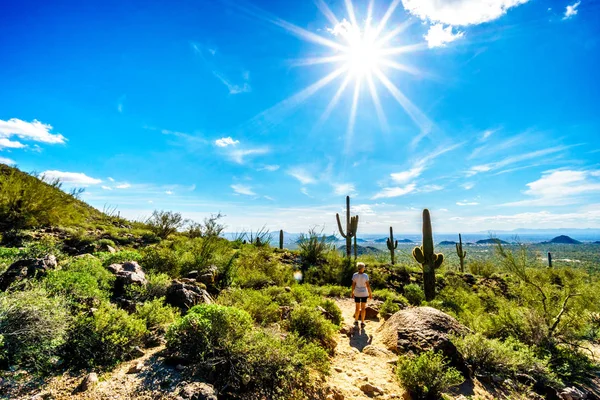
The 0.7-mile interpretive trail offers a perfect introduction to Sonoran Desert blooms, with labeled plants helping visitors identify blooming species like ghost flower, desert willow, and various cacti. This family-friendly path concentrates remarkable plant diversity into a short distance, making it ideal for photographers and plant enthusiasts.
The trail connects to longer routes for those wanting to extend their bloom-hunting adventures.
White Tank Mountain Regional Park Waterfall Trail
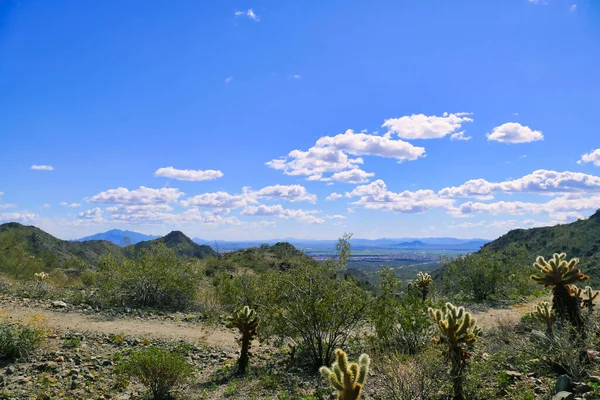
This 1.8-mile trail leads to seasonal waterfalls while passing through diverse desert vegetation that includes blooming jojoba, creosote, and various cacti species. The contrast between flowing water and blooming desert plants creates uniquely beautiful scenes, especially after winter rains.
Rock formations along the route provide natural frames for photographing the interplay between desert blooms and ancient stone.
Estrella Mountain Regional Park Baseline Trail
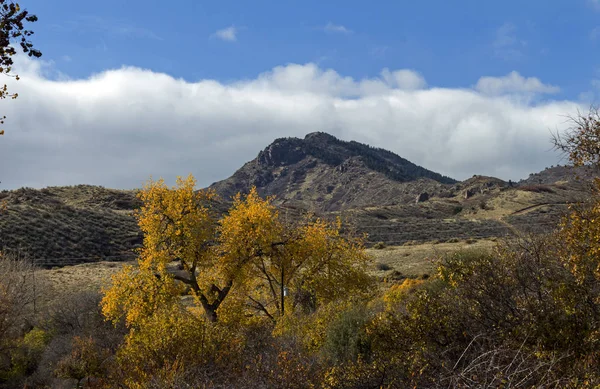
The 4.4-mile round trip offers extensive wildflower viewing opportunities across varied terrain, from flat desert floors to gentle hillsides covered in blooming shrubs and cacti. This trail system provides some of the most reliable spring displays in the Phoenix area, with fairy duster, chuparosa, and desert lupine creating colorful patches throughout the landscape.
The wide, well-maintained path accommodates both casual walkers and serious hikers seeking desert bloom experiences.
Like Travel Pug’s content? Follow us on MSN.
Cave Creek Regional Park Go John Trail
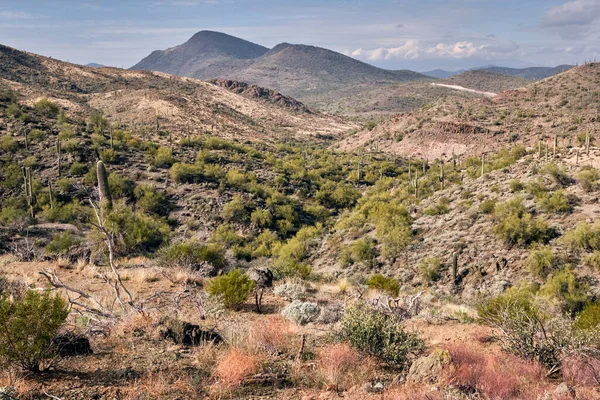
This challenging 5.8-mile loop through the Sonoran Desert foothills rewards hikers with spectacular displays of blooming ocotillo, palo verde, and various cacti species. The trail’s elevation changes create different blooming zones, with desert plants flowering at different times based on altitude and sun exposure.
Advanced hikers appreciate both the physical challenge and the opportunity to observe how microclimates affect desert bloom timing.
Camelback Mountain Echo Canyon Trail
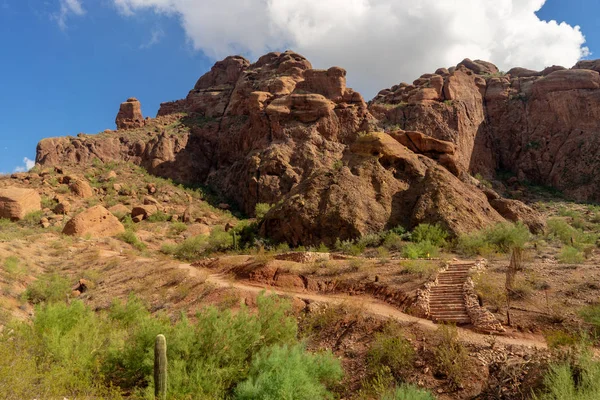
While known for its challenging climb, this 2.4-mile round trip also offers remarkable desert bloom viewing, particularly along the lower sections where brittlebush and fairy duster create golden displays. The urban desert setting provides interesting contrasts between city life and wild desert beauty, especially when blooming palo verde trees frame views of downtown Phoenix.
Early morning climbs during bloom season avoid both crowds and heat while maximizing flower visibility.
Papago Park Big Butte Trail
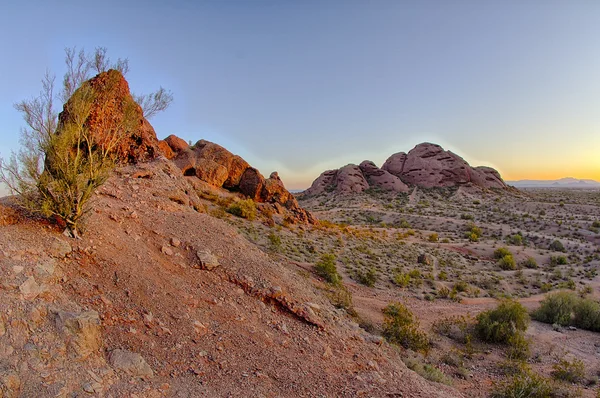
This short 0.2-mile climb to panoramic viewpoints showcases blooming desert plants against the backdrop of Phoenix’s red rock formations and city skyline. The easily accessible trail passes numerous barrel cacti, prickly pears, and desert trees that bloom spectacularly each spring.
Sunset visits during peak bloom create magical combinations of flowering desert plants, red rocks, and golden light.
Like Travel Pug’s content? Follow us on MSN.
Salt River Recreation Area Canyon Lake Trail
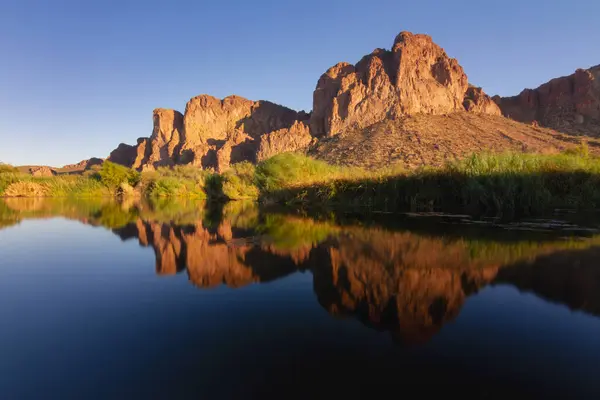
The 2.9-mile trail along Canyon Lake offers unique desert bloom experiences where flowering desert plants meet riparian vegetation near the water’s edge. Desert willow, fairy duster, and various cacti create colorful displays that reflect in the lake’s surface during calm conditions.
The combination of water, blooming desert, and mountain scenery provides some of Arizona’s most photogenic spring landscapes.
Tonto National Forest Butcher Jones Trail
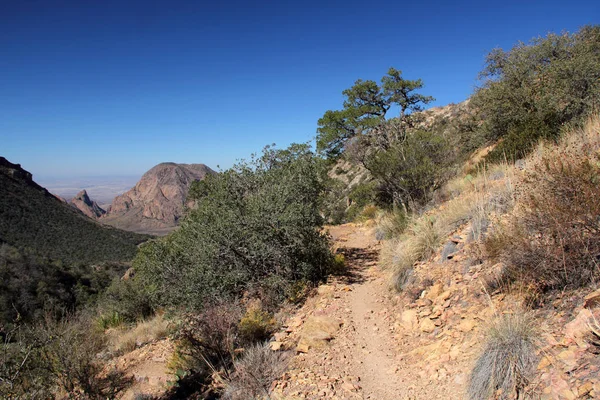
This 4.8-mile trail around the eastern shore of Saguaro Lake passes through pristine desert where blooming saguaros, palo verde trees, and wildflowers create spectacular spring displays. The lakeside setting offers cooling breezes and unique opportunities to photograph desert blooms reflected in water.
Multiple access points allow shorter walks for those wanting to sample the bloom displays without completing the entire loop.
Catalina State Park Nature Trail
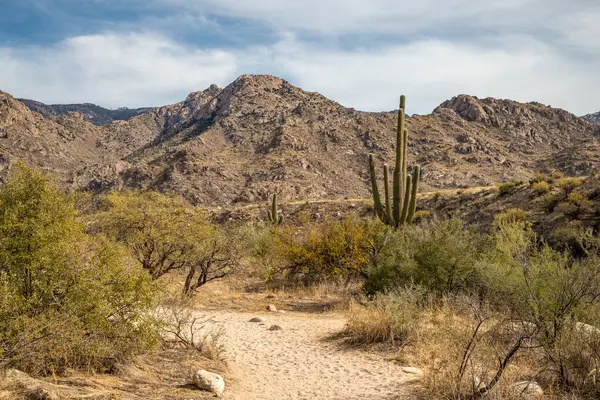
The 1-mile interpretive loop provides an excellent introduction to Sonoran Desert plant communities, with spring blooms including fairy duster, chuparosa, and various cacti species. Educational signs help visitors understand the relationships between blooming plants and desert wildlife, particularly the important role flowers play in supporting birds, bees, and bats.
The trail’s location in the Catalina Mountains foothills creates diverse microclimates that extend the blooming season.
Like Travel Pug’s content? Follow us on MSN.
Tucson Mountain Park Brown Mountain Trail
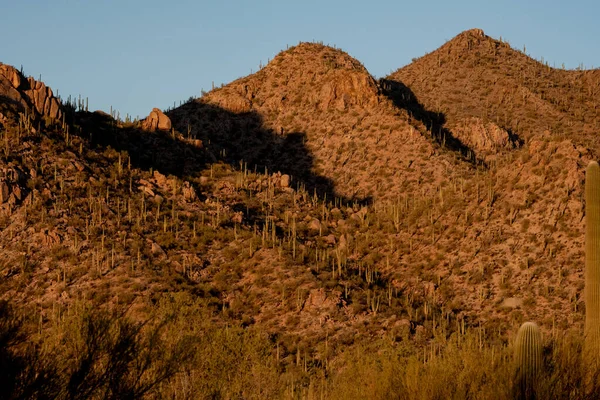
This 2.8-mile trail through saguaro forests offers intimate encounters with blooming giants and understory plants like brittlebush, desert marigolds, and ghost flower. The path winds through different elevation zones where varying sun exposure creates natural bloom succession throughout spring.
Western sunset views through blooming saguaro forests provide some of Arizona’s most iconic desert imagery.
Boyce Thompson Arboretum Main Trail
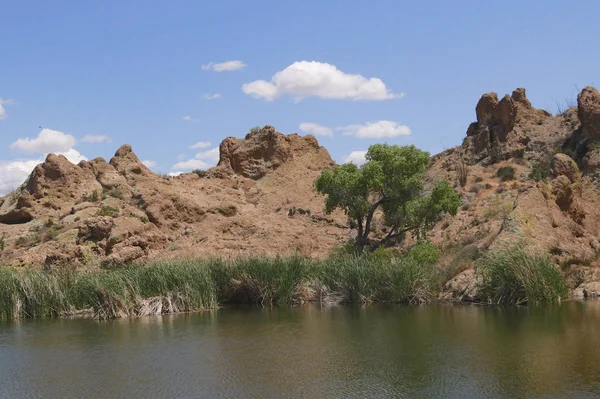
The 1.5-mile paved loop showcases both native and adapted desert plants from around the world, many of which bloom spectacularly from February through May. This living laboratory demonstrates how different desert species bloom at various times, extending the flower viewing season well beyond typical wildflower periods.
The combination of cultivated and wild areas provides educational opportunities about desert plant adaptation and survival strategies.
Goldfield Ghost Town Trail
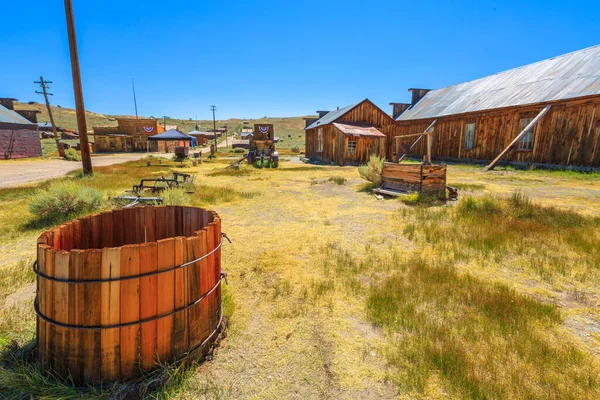
This easy 0.5-mile walk around the historic ghost town site offers surprising desert bloom discoveries among the remnants of Arizona’s mining past. Blooming palo verde trees, brittlebush, and various cacti have reclaimed much of the area, creating beautiful contrasts between human history and natural renewal.
The short distance makes it perfect for families, while the historical context adds depth to the desert bloom experience.
Like Travel Pug’s content? Follow us on MSN.
Where Desert Time Stands Still
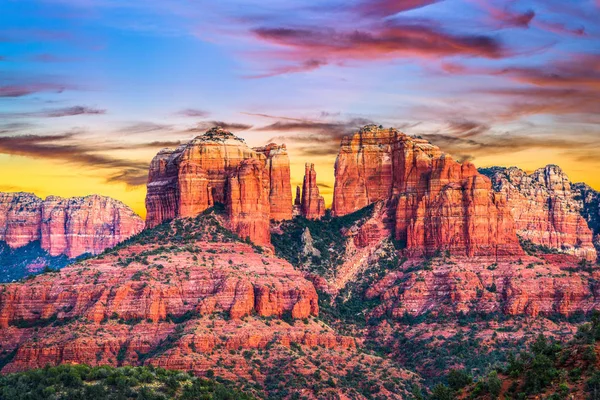
These 20 trails offer more than a series of hiking sites—they’re portals into the age-old cycle of desert rebirth that has played itself out across Arizona for millennia. The same springtime rains that have given today’s rambunctious blooms their flower power have been stimulating this natural party since well before human footsteps inscribed these ancient routes. Desert cultures have always known that the area’s seeming brutality conceals a complex system of beauty and survival, and that flower cycles provide generations with natural calendars.
Modern-day hikers become part of this ageless narrative, seeing the same nature magic that has intrigued desert residents for centuries as they make their own experiences on trails that link past and present through the simple matter of flowers flowering in the wild.
More from Travel Pug

- 20 Best Beach Towns in the Carolinas
- 13 Destinations Where Tourists Regularly Regret Their Trip
- 20 Things You Actually Get in First Class
- 20 Small Airports With Aviation Museums
- 20 Places in the U.S. That Are Perfect for a Reset Trip
Like Travel Pug’s content? Follow us on MSN.
